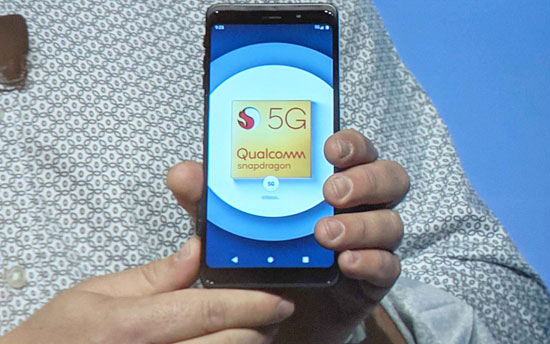5G phones will be bigger & more expensive with crappy battery life… excited yet?
Buried underneath the blistering hype surrounding fifth-generation (5G) wireless is a quiet but growing consensus: the technology is being over-hyped, and early incarnations were rushed to market in a way that prioritized marketing over substance.

Early offerings have been almost comical in their shortcomings. AT&T has repeatedly lied about 5G availability by pretending its 4G network is 5G. Verizon has repeatedly hyped early non-standard launches that, when reviewers actually got to take a look, were found to be barely available.
That’s before we even get to actual 5G phone support, which is fairly paltry so far. Some carriers have gone so far as to offer up extensive and clunky battery mods for existing phones, which few are going to want to actually pay for. And the handsets that are available tend to be bigger, more expensive, and with worse battery life than existing phones.
Qualcomm was so eager to hype 5G and sell more hardware, the company removed the integrated 4G LTE chipset in its 2020 Snapdragon 865 system on a chip (SOC). But one of the impacts of removing integrated LTE is that 5G support now requires more battery life and more space, driving up overall costs for the end user:
‟This means nearly every flagship Android phone will be a 5G phone in 2020, and putting the 5G and 4G on a giant extra chip means smartphones are going to use way more power, no matter which cell network you’re connected to. When 5G networks are only going to be in their infancy in 2020, this sounds like an across-the-board downgrade to me.ˮ
US consumers – who already pay some of the highest prices in the world – are also going to be paying notably more just to connect to these 5G networks, making 5G in the short term an expensive proposition.
The repeal of net neutrality is likely to result in carriers finding new, creative ways to nickel-and-dime you, and the looming merger between Sprint and T-Mobile is likely to reduce competition, driving up consumer costs as well. As such, 5G’s added price proposition isn’t likely to appeal to most users anytime soon.
This is before you get to simple aesthetics and design, and the fact that 5G phones are going to be bigger and clunkier than ever:
‟So far, the industry’s response to 5G’s bigger space requirements has been to make smartphones even larger.
Consider the Galaxy S10 as a data point: you can get 4G versions like the 6.1-inch Galaxy S10 and the 6.4-inch Galaxy S10+, but if you want 5G, you will have to pick up the ultra-huge 6.7-inch Galaxy S10 5G, which is basically a new S10+ sku. For the Galaxy S11’s 2020 release (which, remember, has to have 5G in every model), rumors point to across-the-board size increases for every model.ˮ
Apple has taken some heat for ‘lagging’ behind on a 5G phone, but it’s fairly clear if you’re paying attention that there’s no actual rush. The folks framing 5G as some kind of ‘race’ are largely network gear makers and carriers looking to spike network hardware and smartphone sales (or hey, scare regulators into blind obedience).
In reality, 5G will ultimately provide faster, better, and more resilient mobile networks, but it’s going to take years for networks to reach critical mass and prices to come down. For now, there’s no shame – and likely some notable savings – when it comes to lagging behind on 5G.
yogaesoteric
March 9, 2020
